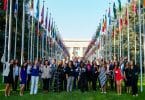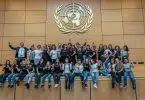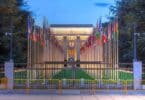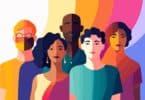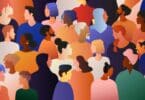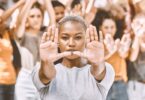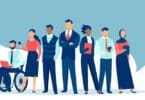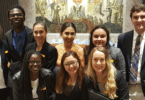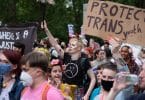Gender equality (sometimes referred to as gender parity) is the state of equality among the sexes. In a gender-equal world, no one faces discrimination because of their gender. No one’s gender is used as justification for restricting economic and social opportunities, legal rights, healthcare services, housing, and more. Gender equality is often discussed in terms of man/woman, but adherence to a strict gender binary is one of the roots of gender inequality. In this short guide, we’ll discuss why jobs in gender equality are important, as well as what issues gender professionals focus on, examples of organizations working in gender equality, and how someone can begin a career in gender equality.
Why the world needs jobs in gender equality
According to UN Women, a new global analysis of gender equality and progress on women’s rights finds the pandemic’s effects have disproportionately affected women and girls. That includes “major disruptions” to women’s health services, which were already not well-funded. Data from the 2021 Global Gender Report also shows that closing the global gender gap will take over 135 years. This represents a backward trend. In light of this reversal, jobs that focus on gender equality are more needed than ever.
When addressing gender inequality, it’s important to know that gender can’t be isolated from inequalities based on sexuality, class, race, physical abilities, and more. Intersectionality, a concept with a long history but coined as a term by legal scholar Kimberlé Crenshaw in 1989, describes how systems of oppression overlap for those with multiple identity categories. As an example, a Black trans woman deals with layers of oppression that don’t affect a White cis woman. Understanding oppression is essential because for many people, gender equality only means lifting women to be equal in power with men. With this restricted view, the most privileged women inevitably stand on the shoulders of those less privileged. This isn’t equality. For equality to be realized, the hierarchies of power must be dismantled. To truly address the nature of power and oppression in all its forms, jobs in gender equality need to understand intersectionality.
What do gender equality professionals do?
Gender equality professionals work in just about every field. They work as lawyers, researchers, teachers, program directors, administration officers, human resources specialists, DEI consultants, healthcare workers, and so on. Rather than list specific job descriptions, we can get a good understanding of what gender equality professionals do by looking at the causes they focus on:
Education
Equality in education represents one of the major successes in gender equality. Turning again to the WEF’s 2021 Global Gender Report, 95% of the gender gap in Educational Attainment has been closed. 37 countries have achieved gender parity. However, the remaining 5% is closing very slowly and at its current pace, it will take just over 14 years to get there. In certain areas, women’s literacy is much lower than the global average. In Pakistan, Mali, Benin, Senegal, Burkina Faso, Togo, Liberia, Angola, and Yemen, less than 67% of the gender gap literacy is closed. In Chad, only 14% of women can read and write compared to 31.3% of men. Gender equality professionals often work on campaigns and programs focused on education for girls. That includes helping families access resources that allow girls to stay in school.
Employment access and equality
58% of the gender gap in Economic Participation and Opportunity has been closed, which makes this area the second-largest of the four gaps the Global Gender Report tracks. While there’s been progress, women make up a small percentage of leadership positions. Wage equality is also moving at a slow pace. The pandemic most likely increased the gap as women were economically hit harder than men. To address these issues, gender equality professionals work to change discriminatory practices and laws, advocate for fair wages, and run programs that teach women how to start businesses, take out loans, and so on.
Reproductive justice
While the reproductive rights movement has historically focused on access to birth control and abortions, reproductive justice is more holistic. In the words of the SisterSong Women of Color Reproductive Justice Collective, reproductive justice is concerned with “the human right to maintain personal bodily autonomy, have children, not have children, and parent the children we have in safe and sustainable communities.” For gender equality professionals, working on reproductive justice includes ensuring access to birth control and abortions, but it’s also about sex education, STI prevention and care, prenatal and pregnancy care, domestic violence assistance, safe housing, adequate incomes, and much more.
Political leadership and participation
According to the 2021 Global Gender Report, Political Empowerment has seen the least amount of progress. Only 22% of the gender gap is closed. Of the 156 countries covered by the report, women represent just 26.1% of the 35,500 parliament seats available and 22.6% of the 3,400 ministers worldwide. In 81 countries, no woman has ever been a head of state. Discriminatory laws and policies continue to limit women’s ability to run for office, while factors like less education and resources are at play, as well. In many places, women also face pressure and harassment when participating in political life. Gender equality professionals work to empower women politically, which includes providing training on how to run for office and advocating for policies that allow more women to run for office.
Where are gender equality jobs located?
There are many organizations centered around achieving gender equality both nationally and internationally. Here are some examples:
The Audre Lorde Project
Founded in 1994, the Audre Lorde Project is a Brooklyn, New-York based organization for LGBTQ+ people of color. Its work focuses on community organizing and radical nonviolent activism in the New York City area. On its About page, it reads: “Understanding the historic role of sexism that has negatively impacted all of our communities, and recognizing that women’s leadership continues to be de-valued and discouraged in broader LGBTSTGNC organizations/communities, ALP strives to use anti-sexist practice while supporting and promoting the active participation, leadership, and perspectives of women throughout its structure and work.”
SisterSong Women of Color Reproductive Justice Collective
SisterSong is an Atlanta, Georgia-based national membership organization made of individuals and organizations committed to reproductive justice for marginalized communities. Formed in 1997 by 16 organizations of women of color (Native American, African American, Latina, and Asian American), the organization runs a variety of programs like the RJ Training & Leadership Development program and the Southern RJ Network.
Gender Equality Resource Center
An NGO based in the Philippines, the GERC partners with cooperatives, other NGOs, government agencies, and other organizations to promote gender equality. GERC”s work includes providing training and consultancy to private and government agencies needing assistance with implementing gender equality policies.
European Institute for Gender Equality
Established in 2006 in Lithuania, the EIGE serves as the European Union agency responsible for studying gender equality. The institute collects and analyzes data that helps the EU Member States implement gender equality policies and end gender-based discrimination. It tracks areas like gender mainstreaming and gender-based violence. It also publishes the Gender Equality Index report.
How do you start working in gender equality?
Education is the first step to working in gender equality. Most organizations dedicated to gender equality want job candidates with at least a bachelor’s degree. Higher-level jobs often require master’s degrees or even doctorates. Because the field is so broad, you’ll want to identify what area you want to work in and choose a degree based on that. As an example, if you want to work in healthcare, you’ll need a different education than if you want to work in law. If you don’t get a dedicated degree in gender studies, women’s studies, or human rights, take as many classes as you can in those areas.
While you’re in school, you should also seek out internships, volunteer opportunities, and fellowships even if they aren’t required by your degree program. This gives you valuable experience and networking opportunities. It’s rare to find an entry-level job after graduation that doesn’t require previous experience. Many people find jobs with organizations they volunteered or interned with, though it’s not a guarantee.
The skills gained through education and work experience help you succeed in a gender equality job, but there are many soft skills you’ll need, as well. Excellent communication skills will take you far in any job, even if your work doesn’t involve a lot of speaking or writing. You’ll also need excellent time management, good organization, and patience. Gender equality is a long way away and organizations face significant challenges. As is the case for anyone working in the human rights field, people who work in gender equality are often targeted. Depending on where you live, the risks can be severe. Emotional resilience, problem-solving, and an understanding of the danger are all important skills.
How much do gender equality jobs pay?
Gender equality is more of a work focus than a job category, so it’s difficult to give a specific range for salary. The work of a midwife and the director of an international NGO can both focus on gender equality, but their salaries will be very different. Salary also depends on factors like your education and previous work experience, compensation history, where the job is based, and the size of the organization. For a midwife in the United States, ZipRecruiter lists the average pay as $100,932 a year. A civil rights attorney, who can choose to work on gender equality cases, makes about $82,382 a year in the United States. According to Payscale, the director of a nonprofit in the US makes an average of $59,769 a year.


